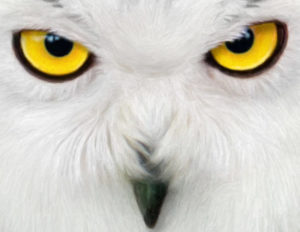“Toto, I’ve a feeling we’re not in Kansas anymore.”—Dorothy Gale
In the interest of not getting sued, I should make it known at the outset that much of this article is based on the works of Carl Jung and Patrick Harpur, both far deeper thinkers than your humble narrator, although some of the ideas are my own. I’ll try to make it clear exactly whose insane interpretation of reality I’m referring to as we go since I don’t wish to misrepresent any of my own delusions as being theirs. As a rule of thumb, please consider what follows to be either my own thoughts on the matter or my possible misrepresentation of their work unless otherwise indicated…or obvious.
The term “daimon” comes to us from the ancient Greeks, but what these beings were and what their purported function was varied between philosophers. By some, they were considered to be, more or less, what we think of as angels and demons – either sympathetic or hostile towards humanity. Others considered them to be those who brought good fortune to the deserving. Still others maintained that one of them was assigned to each of us at birth, making them an ancient Greek version of guardian angels, all of which is well and good, but not really relevant for our purposes. I just thought that I should at least clarify the origin of the term before we go on. What does matter is the nature of their alleged existence – not entirely physical, not completely spiritual, but somewhere in between and capable of interacting with either reality. This does separate them from the standard concept of angels and demons, both of which are almost universally considered to be completely spiritual beings.
were considered to be, more or less, what we think of as angels and demons – either sympathetic or hostile towards humanity. Others considered them to be those who brought good fortune to the deserving. Still others maintained that one of them was assigned to each of us at birth, making them an ancient Greek version of guardian angels, all of which is well and good, but not really relevant for our purposes. I just thought that I should at least clarify the origin of the term before we go on. What does matter is the nature of their alleged existence – not entirely physical, not completely spiritual, but somewhere in between and capable of interacting with either reality. This does separate them from the standard concept of angels and demons, both of which are almost universally considered to be completely spiritual beings.
 Patrick Harpur, upon whose work much of this article is based, maintains that all variety of enigmatic beings (fairies, jinn, big hairy monsters, aliens, etc.) are all actually denizens of this Otherworld, and so he refers to them all collectively as daimons. Like fairies and the jinn of folklore, they can seem to be good or evil, benevolent or malicious, but regardless of their motives, they are always enigmatic. This is likely because we do not even remotely grasp the nature of their intellect, and perhaps they’re in the same boat with regards to us. What may seem evil or terrifying might be meant to guide or enlighten us in some way. Conversely, beings that have seemed completely benign have led people to ruin and even insanity in some cases. A university professor who obediently proclaimed the alien gospel communicated to him lost everything, even his loyal followers, when the end of the world failed to occur on the designated date, and the saucers that were coming to save the faithful never bothered to materialize. We must consider the possibility that even though they might all be the same type of intelligence, that doesn’t necessarily mean that they all have the same motivations or intentions. Perhaps like us, being of the same species does not mean that their objectives are all the same, or that they all even like each other.
Patrick Harpur, upon whose work much of this article is based, maintains that all variety of enigmatic beings (fairies, jinn, big hairy monsters, aliens, etc.) are all actually denizens of this Otherworld, and so he refers to them all collectively as daimons. Like fairies and the jinn of folklore, they can seem to be good or evil, benevolent or malicious, but regardless of their motives, they are always enigmatic. This is likely because we do not even remotely grasp the nature of their intellect, and perhaps they’re in the same boat with regards to us. What may seem evil or terrifying might be meant to guide or enlighten us in some way. Conversely, beings that have seemed completely benign have led people to ruin and even insanity in some cases. A university professor who obediently proclaimed the alien gospel communicated to him lost everything, even his loyal followers, when the end of the world failed to occur on the designated date, and the saucers that were coming to save the faithful never bothered to materialize. We must consider the possibility that even though they might all be the same type of intelligence, that doesn’t necessarily mean that they all have the same motivations or intentions. Perhaps like us, being of the same species does not mean that their objectives are all the same, or that they all even like each other.